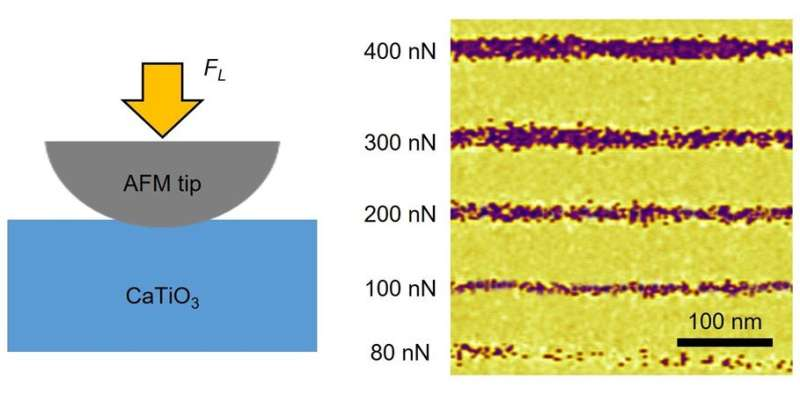A team of scientists led by POSTECH's Professor Daesu Lee (Department of Physics), Soongsil University's Professor Se Young Park (Department of Physics), and Seoul National University's Dr. Ji Hye Lee (Department of Physics and Astronomy) has developed a technique for densely storing the data by "poking" with a sharp probe. The technique allows the use of a metastable medium, whose characteristics vary readily even with minor activation, as reported by TopTek News.
The published study's abstract states that the mechanical switching of ferroelectric polarization based on flexoelectricity had an individual style as an intriguing alternative to traditional polarization switching relying on electric fields.
The scientists show how to use metastable ferroelectricity to provide hyper-efficient mechanical polarization switching. They expect mechanical properties to significantly diminish the coercivity of metastable ferroelectricity, enhancing flexoelectricity-driven mechanical polarization switching. As projected, researchers establish mechanically polarized shifting in metastable ferroelectric CaTiO 3 with an extraordinarily low mechanical force (100 nN).
The Nanometer Pressure Probing Method
In a report from the Verve Times, while the researchers used pressure, the collaborative team was able to reduce the width of the polarization route to less than 10 nm and discovered a means to boost significantly storage capacity for data. That's because the lesser the route size, the more data the same element can contain.
As a result of sketching the data storage region on the thin film using a probing, the digital storage capability improved by up to 1 terabit (Tbit)/cm. The performance is ten times that of prior research (0.11 Tbit/cm2), which proposed a probe-based storing approach utilizing various materials. But unlike electric field-based data storage methodology, this probe approach requires relatively little force, resulting in a low strain on the equipment.

Left: Data storage using probe force. Right: Data storage area was drawn with a width of 10 nm or less.
ALSO READ: Geckos Have Nanometer-Thin Lipids in Their Feet Allowing Them to Stick to Walls, Study Reveals
Future Use of New Discovery in Nanotechnology
Physical Review Letters, where it was originally posted, is one of the most authoritative journals in the field of physics; the study was aided by the Institute for Basic Science, as well as the National Research Foundation of Korea's Research Center Program, the Basic Science Research Institute Fund, and the Key Research Institutes in Universities program.
The findings of this study have sparked interest since researchers demonstrate that materials function better in unstable metastable conditions. The discoveries are expected to be relevant in future next-generation electronic devices with enhanced integration and performance.
In 1946, Seoul National University was established; the Gwanak university in Seoul is the primary location of the South Korean national university. This also features a hospital facility and an agricultural education and research campus; according to US News, this national university in South Korea ranks as number 130 university globally and number 62 in subjects for nanoscience and nanotechnology, while Soongsil University ranked number 38 in the country according to Edurank.org.
RELATED ARTICLE: Skyrmions Form Through He+ Ion Irradiation and Backside Reflecting Masks
Check out more news and information on Nanotechnology in Science Times.














